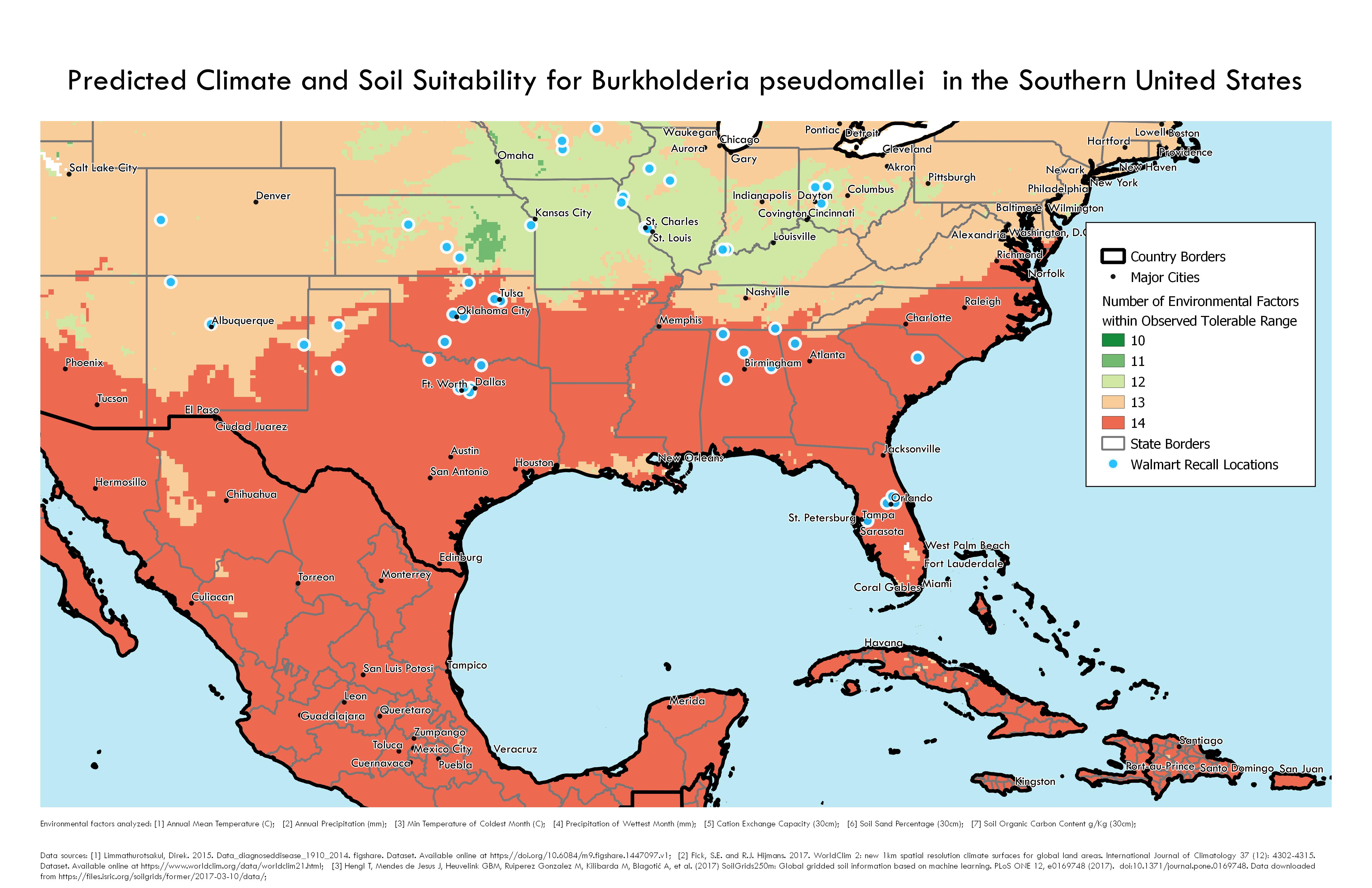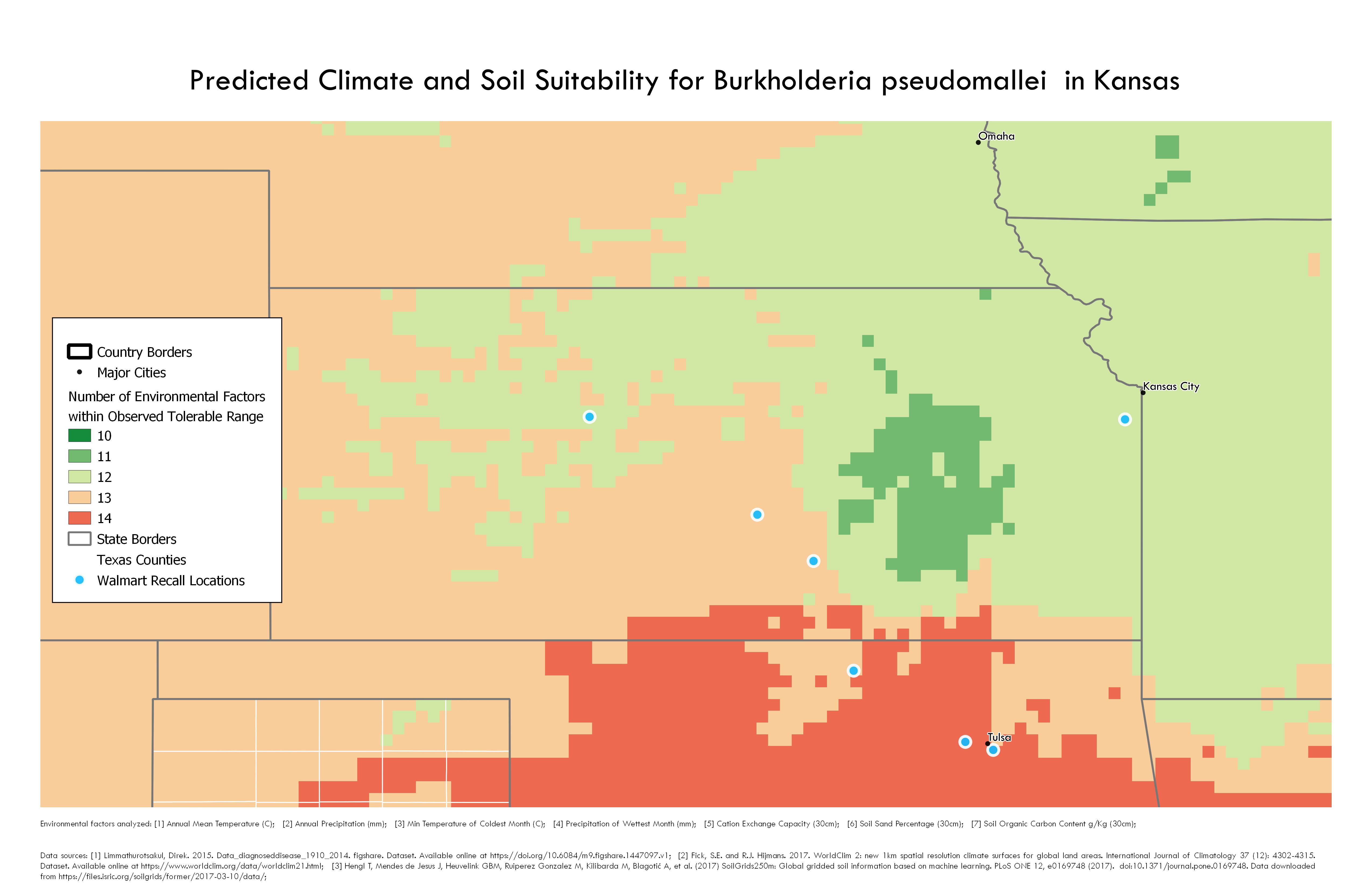Melioidosis in United States
Melioidosis is a disease caused by the bacteria Burkholderia pseudomallei. Humans and other animals mainly acquire the infection through inhalation of or cutaneous exposure to soil and water containing the bacteria.
Melioidosis is classically characterized by pneumonia, multiple abscesses, septicemia and a mortality rate of up to 40% or more. It has a range of infection types with different symptoms, and the incubation period ranges from one day to many years. A complete list of symptoms can be found on the CDC website at https://www.cdc.gov/melioidosis/symptoms/ [1].
Historically, melioidosis is considered a tropical disease, and cases are most frequently identified in Southeast Asia and northern Australia. However, this does not mean that those living outside of these regions are not at risk for being impacted by this illness. Cases of melioidosis are currently rare in the United States, but recent cases highlight possible avenues for infection that should not be ignored. In 2021, four cases of melioidosis, two of which proved fatal, were identified across multiple states in the US (https://www.cdc.gov/melioidosis/outbreak/2021/)[2]. The source of infection was initially unclear, but the CDC was able to eventually link all four cases to a home fragrance spray sold at Walmart stores across the country. This spray had been manufactured in south Asia, a region where B. pseudomallei is know to survive in soils, indicating that consumers of goods produced in regions of the world where melioidosis is endemic may be at risk from contracting the disease from contaminated products.

In 2022, B. pseudomallei was also discovered in the soils of the Gulf Coast region of Mississippi indicating that there may be a risk of Americans contracting melioidosis in the United States through exposure to soil and water. There have also been two cases of melioidosis documented in Atascosa County, Texas for which no source of infection has yet been identified [3]. All of these developments have occurred within just the last decade indicating that risk of contracting melioidosis may be growing. Given that melioidosis may be becoming a disease of greater concern, it is important to understand where cases of melioidosis might be most likely to occur and determine who is greatest risk to help clinicians better diagnose this rare disease so that it can be treated as early as possible.

To that end, our research team has worked on developing a habitat suitability model that attempts to predict where B. pseudomallei might be able to survive in soil and water across the world[4]. This model generates maps and geospatial data indicating which areas on Earth, including here in the United States, are most suitable for establishment and survival of the bacteria based on the environmental conditions (precipitation, temperature, soil characteristics, etc.) of locations where it has previously been identified in soil or water samples. The results of this model indicate that there are areas where B. pseudomallei might be able to survive where melioidosis has not commonly been identified. This could indicate that 1) these areas might be endemic for the disease but it is underreported, as we suspect might be the case for West Africa or 2) B. pseudomallei might not be present in these soils now, but if it is introduced to these regions it is likely to be able to survive and the local population may be at risk for acquiring melioidosis through environmental exposure.



You can read our posters below or access via Texas ScholarWork.
[1]CDC – National Center for Health Statistics. “Melioidosis - Signs and Symptoms”. 23 Nov. 2021. https://www.cdc.gov/melioidosis/symptoms/. (accessed 16 Jun 2023)
[2]CDC – National Center for Health Statistics. “Melioidosis - 2021 Multistate outbreak of melioidosis”. 4 Nov. 2021. https://www.cdc.gov/melioidosis/outbreak/2021/. (accessed 16 Jun 2023)
[3] Hall, Carina M et al. “Low risk of acquiring melioidosis from the environment in the continental United States.” PloS one vol. 17,7 e0270997. 29 Jul. 2022, doi:10.1371/journal.pone.0270997
[4] Shensky, Michael G. et al. “Geospatial Analysis of Environmental Suitability for Burkholderia species Using Data Analytics”. Texas ScholarWorks, University of Texas Libraries. 15 Oct. 2019, http://dx.doi.org/10.26153/tsw/9331
